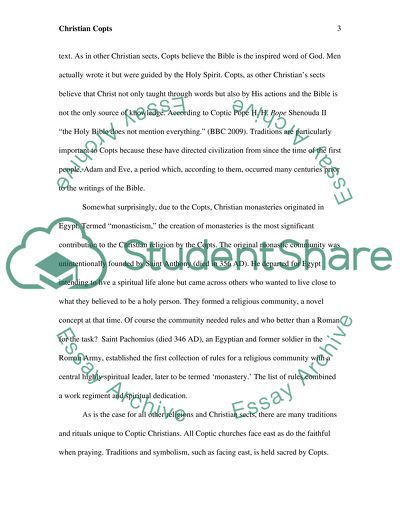Cite this document
(“Christian copts Research Paper Example | Topics and Well Written Essays - 1250 words”, n.d.)
Christian copts Research Paper Example | Topics and Well Written Essays - 1250 words. Retrieved from https://studentshare.org/religion-and-theology/1495983-christian-copts
Christian copts Research Paper Example | Topics and Well Written Essays - 1250 words. Retrieved from https://studentshare.org/religion-and-theology/1495983-christian-copts
(Christian Copts Research Paper Example | Topics and Well Written Essays - 1250 Words)
Christian Copts Research Paper Example | Topics and Well Written Essays - 1250 Words. https://studentshare.org/religion-and-theology/1495983-christian-copts.
Christian Copts Research Paper Example | Topics and Well Written Essays - 1250 Words. https://studentshare.org/religion-and-theology/1495983-christian-copts.
“Christian Copts Research Paper Example | Topics and Well Written Essays - 1250 Words”, n.d. https://studentshare.org/religion-and-theology/1495983-christian-copts.


